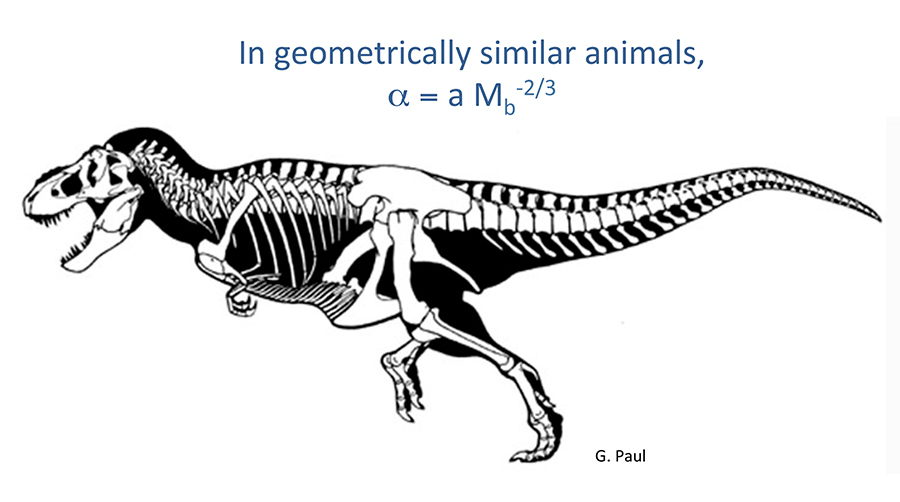
Because the resistance a body offers to forces acting to cause rotation is a function of the square of the body's length, we can expect rotational inertia to have had a relatively large impact on the evolution of body shape and size.
OUR STUDIES
Carrier, D. R., D. V. Lee, and R. M. Walter. (2001). Influence of rotational inertia on the turning performance of theropod dinosaurs: clues from humans with increased rotational inertia. J. Exp. Biol. 204, 3917-3926. Full text of this article in PDF
Lee, D. V., R. M. Walter, S. M. Deban, and D. R. Carrier. (2001). Influence of increased rotational inertia on the turning performance of humans. J. Exp. Biol. 204, 3927-3934. Full text of this article in PDF
Walter, R. M. and D. R. Carrier. (2002). Scaling of rotational inertia in murine rodents and two species of lizard. J. Exp. Biol. 205, 2135-2141. Full text of this article in PDF
Walter, R. M. (2003). Kinematics of 90 running turns in wild mice. J. Exp. Biol. 206, 1739-1749. Full text of this article in PDF
SELECTED RELATED STUDIES BY OTHER RESERCHERS
Henderson, D. M. and Snively, E. (2004). Tyrannosaurus en pointe: allometry minimized rotational inertia of large carnivorous dinosaurs. Proceedings of the Royal Society of London B: Biological Sciences 271, S57-S60.
Farmer, C. G. (2006). On the origin of avian air sacs. Respiratory physiology & neurobiology 154, 89-106.
Alexander, R. M. (2006). Dinosaur biomechanics. Proceedings of the Royal Society of London B: Biological Sciences 273, 1849-1855.
Jindrich, D. L., Besier, T. F. and Lloyd, D. G. (2006). A hypothesis for the function of braking forces during running turns. Journal of biomechanics 39, 1611-1620.
Hutchinson, J. R., Ng-Thow-Hing, and V. Anderson, F. C. (2007). A 3D interactive method for estimating body segmental parameters in animals: application to the turning and running performance of Tyrannosaurus rex. Journal of Theoretical Biology 246, 660-680.
Jindrich, D. L. and Qiao, M. (2009). Maneuvers during legged locomotion. Chaos: An Interdisciplinary Journal of Nonlinear Science 19, 026105.
Altshuler, D. L., Quicazán-Rubio, E. M., Segre, P. S. and Middleton, K. M. (2012). Wingbeat kinematics and motor control of yaw turns in Anna's hummingbirds (Calypte anna). The Journal of experimental biology 215, 4070-4084.
Qiao, M., Brown, B. and Jindrich, D. L. (2014). Compensations for increased rotational inertia during human cutting turns. The Journal of experimental biology 217, 432-443.
Clemente, C. J. (2014). The evolution of bipedal running in lizards suggests a consequential origin may be exploited in later lineages. Evolution 68, 2171-2183.